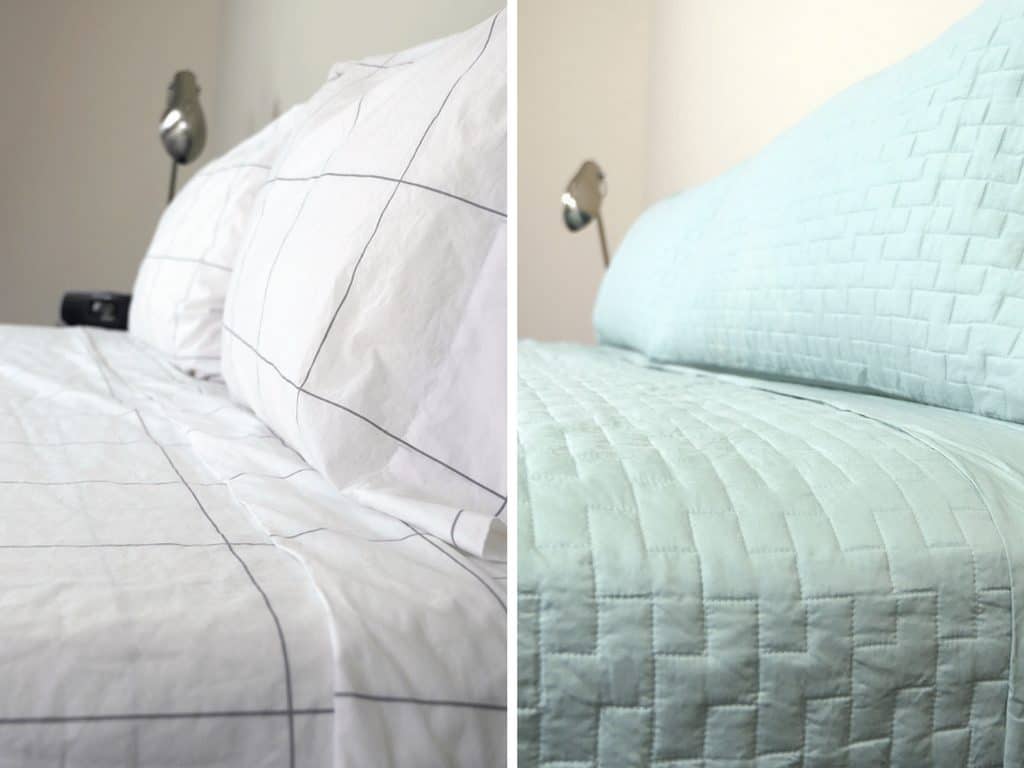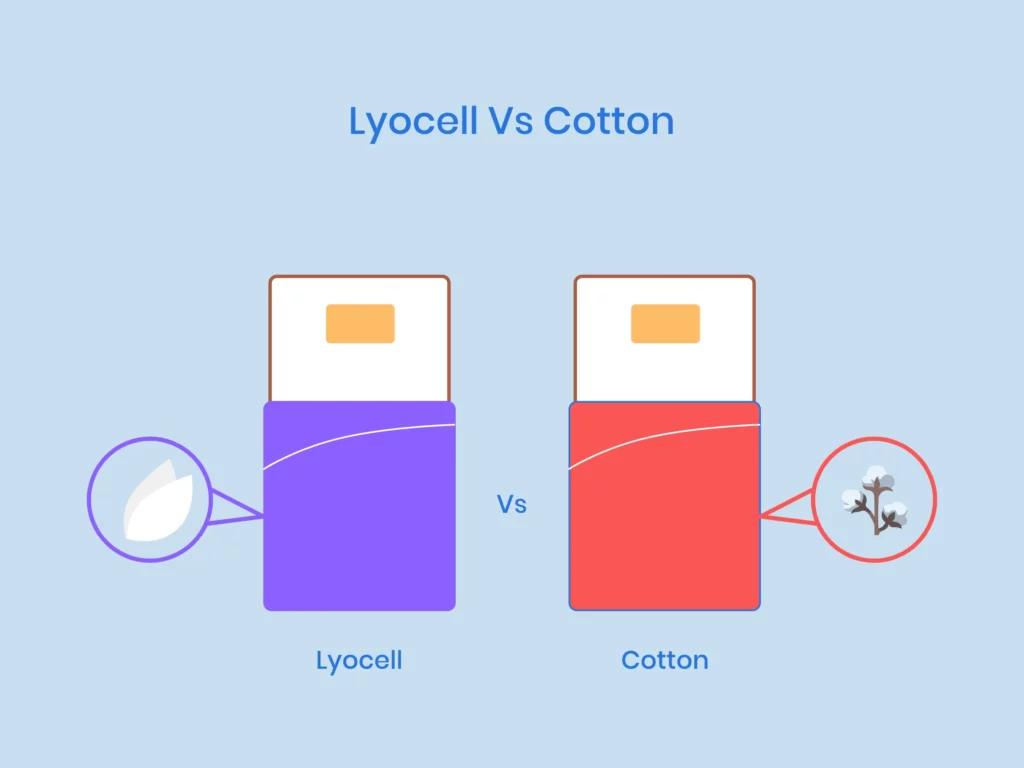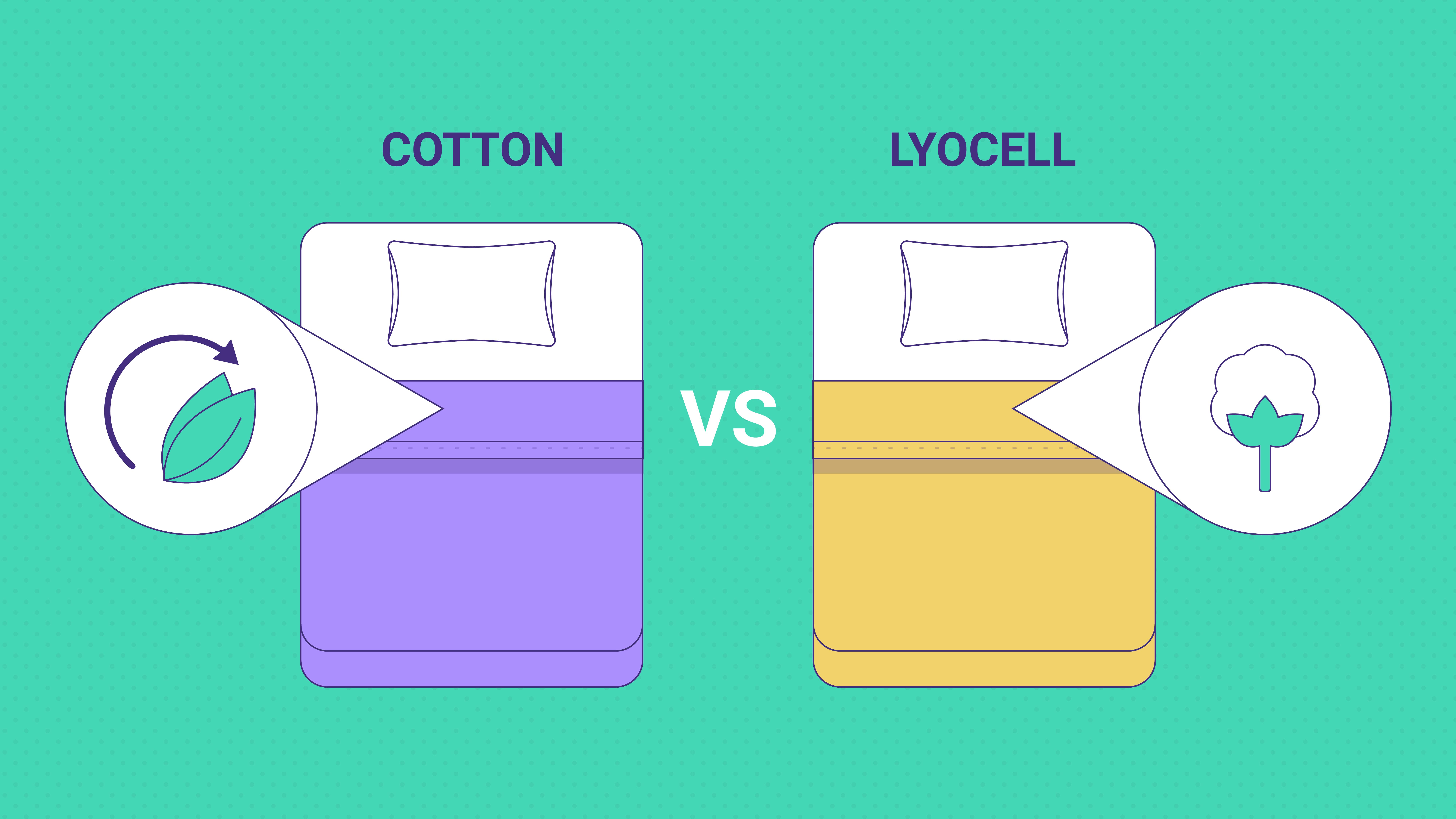Lyocell is a sustainable fabric made from wood pulp, while cotton is a natural fiber derived from the cotton plant. Lyocell offers a softer and smoother feel, with excellent moisture-wicking properties, making it ideal for sensitive skin.
On the other hand, cotton is breathable and durable, but it can be less eco-friendly due to the extensive use of water and pesticides in its cultivation. Both fabrics have their own unique advantages and disadvantages, and the choice between them depends on personal preferences and needs.
So, whether you prioritize sustainability or prefer a classic natural fabric, understanding the differences between Lyocell and cotton can help you make an informed decision when it comes to choosing the right material for your clothing.

Credit: sleepopolis.com
Table of Contents
Introduction To Lyocell And Cotton
The origin of Lyocell can be traced back to wood pulp, while cotton has been a staple in textiles for centuries. This natural fiber boasts a timeless popularity, known for its breathability and softness. Lyocell, on the other hand, is a newer arrival on the textile scene, offering eco-friendly production and a silky texture. Both materials have their unique characteristics, making them suitable for various applications.

Credit: www.nectarsleep.com
Physical Properties Comparison
Lyocell and cotton have distinct physical properties. Lyocell is silky, breathable, and moisture-wicking, while cotton is soft, absorbent, and durable. Each material offers unique benefits, making them suitable for different preferences and needs.
| Physical Properties | Lyocell | Cotton |
| Texture and Strength | Lyocell is smooth and strong, offering a luxurious feel. | Cotton is soft and durable, providing a familiar, comforting texture. |
| Breathability and Moisture Absorption | Lyocell is highly breathable and moisture-wicking, ideal for warm climates. | Cotton is naturally breathable and adept at absorbing moisture, promoting comfort. |
Environmental Impact
Lyocell Vs CottonIn terms of environmental impact, lyocell and cotton have significant differences. Lyocell is produced using a closed-loop process, where the solvent used to dissolve the wood pulp is recycled, reducing waste and water consumption. On the other hand, cotton production requires vast amounts of water, pesticides, and fertilizers, resulting in pollution and depletion of natural resources.
When it comes to sustainable production processes, lyocell is the clear winner. Its manufacturing involves minimal chemical usage and energy consumption, making it more eco-friendly compared to conventional cotton farming. Additionally, lyocell fibers are biodegradable, ensuring a reduced environmental footprint.
In conclusion, lyocell surpasses cotton in terms of sustainability and environmental impact. Its closed-loop production process, minimal chemical usage, and biodegradability make it a more eco-friendly choice for conscious consumers.
Skin Sensitivity And Allergies
When it comes to skin sensitivity and allergies, the choice between lyocell and cotton becomes crucial. Both fabrics have their unique qualities, but hypoallergenic properties make lyocell stand out.
Lyocell is a fabric made from wood pulp, which undergoes an eco-friendly manufacturing process. Its smooth and breathable texture makes it ideal for sensitive skin. Unlike cotton, lyocell fibers are less prone to causing irritation or triggering allergies. Its moisture-wicking abilities also help in reducing the risk of skin rashes and discomfort.
Cotton, on the other hand, is a natural fabric that is widely used and loved. While it is generally suitable for most people, it may not be the best choice for those with sensitive skin. Cotton fibers can sometimes be rough and may cause itching or redness.
In conclusion, if you have skin sensitivity or allergies, choosing lyocell over cotton can be a wise decision. Its hypoallergenic qualities and gentle touch on the skin make it a great option for those seeking comfort and relief.
Durability And Maintenance
Lyocell offers superior durability and requires less maintenance compared to cotton. Its strong fibers can withstand frequent washing and wear, while also resisting wrinkles and shrinkage. With Lyocell, you can enjoy long-lasting, low-maintenance fabric that retains its quality wash after wash.
| Lyocell | Cotton | |
|---|---|---|
| Lifespan | Lyocell fibers are incredibly durable and can last longer than cotton. It has a high resistance to wear and tear, making it an excellent choice for clothing items that are frequently washed or worn. | Cotton is a natural fiber and can last a long time with proper care. However, it is not as durable as Lyocell and may show signs of wear and tear more quickly. |
| Care Instructions | Lyocell is easy to care for and can be machine washed and dried. It is also wrinkle-resistant, so it does not require ironing. However, it is recommended to use a mild detergent and avoid high heat when washing and drying. | Cotton is easy to care for and can be machine washed and dried. However, it may shrink in high heat, so it is recommended to wash it in cold water and tumble dry on low heat. Cotton may also require ironing to remove wrinkles. |
Cost-effectiveness And Availability
Lyocell offers a cost-effective and sustainable alternative to cotton. Its availability is increasing as more brands adopt this eco-friendly fabric. With its efficient production process, Lyocell is becoming a popular choice for environmentally conscious consumers.
| Lyocell | Cotton |
|---|---|
| Lyocell is a cost-effective alternative to cotton as it is made from wood pulp, a renewable resource. | Cotton is more expensive than lyocell due to the high demand and production costs. |
| Lyocell is widely available in the market as it is becoming more popular among consumers and manufacturers. | Cotton is easily accessible in the market as it has been the go-to material for many years. |
Fashion And Comfort
Fashion and Comfort:
Lyocell and cotton are both popular choices in the fashion industry due to their versatility and comfort. Lyocell, a sustainable and eco-friendly fabric, has gained popularity in recent years for its softness and breathability. It is known for its ability to drape well, making it a favored choice for flowing dresses and elegant tops. Cotton, on the other hand, is a classic fabric that has been used for centuries. It is highly breathable and offers excellent moisture absorption, making it ideal for everyday wear.
Adaptability to Trends:
Both lyocell and cotton are adaptable to the ever-changing fashion trends. Lyocell can be easily blended with other fabrics to enhance its properties, making it a versatile choice for various styles and designs. Cotton, with its natural fibers, can be dyed in a wide range of colors and patterns, allowing it to stay relevant in the ever-evolving fashion world.
Wearability and Comfort for Daily Use:
When it comes to wearability and comfort, both lyocell and cotton excel. Lyocell’s soft and smooth texture feels luxurious against the skin, while cotton’s natural fibers provide breathability and durability. Whether it’s a casual t-shirt or a formal dress, both fabrics offer comfort and ease of movement for daily wear.

Credit: www.sleepjunkie.com
Making The Right Choice For Your Needs
Making the right choice between Lyocell and Cotton depends on assessing your lifestyle and usage. Both fabrics have their own unique qualities and benefits.
Lifestyle: If you have an active lifestyle and need clothing that can keep up with you, Lyocell is a great choice. It is known for its moisture-wicking properties, making it perfect for exercise or hot climates. On the other hand, if you prefer a more traditional fabric, cotton offers a comfortable and breathable option for everyday wear.
Usage: Consider how you plan to use the fabric. If you are looking for bedding or towels, cotton is a popular choice due to its durability and absorbency. However, if you are looking for clothing that is eco-friendly and sustainable, Lyocell is made from renewable materials and has a lower environmental impact.
Final Recommendations: Ultimately, the choice between Lyocell and Cotton depends on your personal preferences and needs. Consider factors such as comfort, durability, and sustainability when making your decision.
Frequently Asked Questions
Which Is Better Lyocell Or Cotton?
Lyocell is a better option than cotton as it is softer, more absorbent, and eco-friendly. It is made from wood pulp, which is a renewable resource, and requires less water and pesticides than cotton. Lyocell is also hypoallergenic and has antibacterial properties, making it a healthier choice.
Is Lyocell As Breathable As Cotton?
Yes, lyocell is as breathable as cotton. Both fabrics allow air to pass through, keeping you cool and comfortable. Lyocell’s unique fiber structure enhances its breathability, making it an excellent choice for those seeking a breathable alternative to cotton.
Is Lyocell A Disadvantage?
Lyocell does not have any disadvantages. It is a sustainable fabric made from wood pulp, known for its softness, breathability, and moisture-wicking properties. It is also biodegradable and requires less water and energy to produce compared to other fabrics.
Which Is Cooler Cotton Or Lyocell?
Lyocell is cooler than cotton because it has better moisture management properties. Lyocell fibers are more absorbent than cotton and can wick away moisture from the skin, keeping you cooler and drier. Additionally, lyocell is also softer and more sustainable than cotton.
Conclusion
After comparing Lyocell and Cotton in various aspects, it can be concluded that both fabrics have their own unique features. Lyocell is eco-friendly, moisture-wicking and has a soft texture, while Cotton is durable, breathable and has a natural feel. However, choosing the right fabric depends on individual preferences and needs.
It is important to consider factors such as comfort, environmental impact, and durability when making a decision. Ultimately, both fabrics have their own advantages and disadvantages, so it’s up to the consumer to decide which one suits their needs best.
